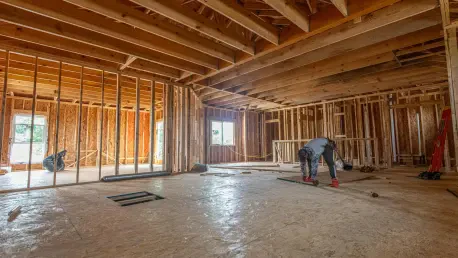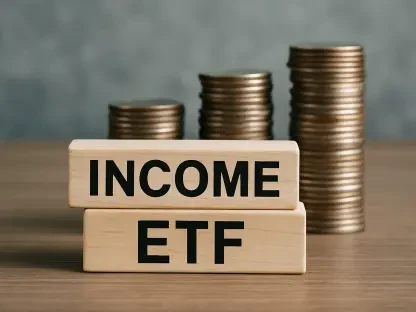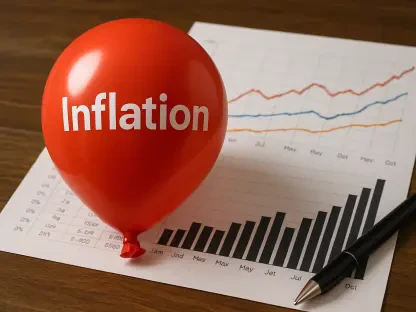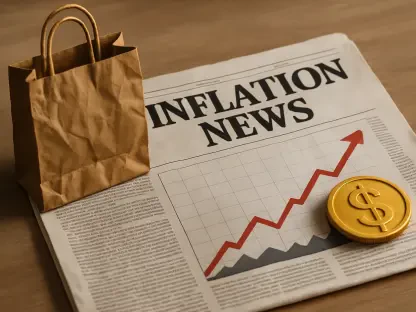In the intricate financial landscape of September 2025, two distinct players—Lennar Corporation, a prominent U.S. homebuilder listed on the NYSE as LEN, and Aimei Health Technology (AFJK), a Special Purpose Acquisition Company (SPAC) in the healthcare sector—find themselves navigating a maze of economic challenges and opportunities. Their trajectories unfold amid a backdrop of significant macroeconomic shifts, including a recent Federal Reserve interest rate cut, stubbornly high mortgage rates, and newly imposed tariffs on building materials that are reshaping cost structures. These elements create a complex environment for investors, where cautious optimism is tempered by persistent uncertainties. Lennar’s latest earnings report reveals a housing market under strain, grappling with affordability issues, while AFJK’s silence on operational progress raises questions about its viability in a maturing SPAC arena. This exploration aims to dissect the contrasting paths of these entities, shedding light on how broader market dynamics influence their investment potential. The interplay of policy decisions, sector-specific trends, and company strategies paints a picture of a market in transition, demanding careful analysis from those looking to capitalize on long-term prospects. As economic signals remain mixed, understanding the nuances of each company’s challenges and responses becomes crucial for navigating this uncertain terrain.
Lennar Corporation: Navigating Housing Market Headwinds
Financial Performance and Industry Challenges
Lennar’s third-quarter earnings report, released on September 18, 2025, offers a stark glimpse into the pressures facing the U.S. housing sector, with a reported 6% revenue decline to $8.8 billion compared to the previous year. This downturn, coupled with a significant drop in gross margins from 22.5% to 17.5%, highlights the affordability crisis gripping the industry. Despite delivering a steady 21,584 homes, the average sales price fell by 9% to $383,000, a direct result of intensified competition and the need to offer substantial sales incentives averaging 14.3% of the final price. Such measures reflect a broader trend among homebuilders, including peers like D.R. Horton and KB Home, where stimulating demand often comes at the expense of profitability. The data underscores a market shifting away from the rapid growth of the pandemic era toward a more constrained environment, where external factors like high mortgage rates and rising costs exacerbate the challenges.
Beyond the numbers, the ripple effects of this rebalancing are evident across the housing ecosystem, impacting not just builders but also related industries like construction materials and mortgage origination. The persistent mortgage rates, hovering between 6.5% and 6.7%, continue to deter potential buyers, even after the Federal Reserve’s recent rate cut on September 17, 2025. This disconnect between policy intent and market reality places additional strain on companies like Lennar, forcing difficult decisions on pricing strategies. Moreover, new tariffs on building materials, estimated to add nearly $11,000 per home in construction costs, further compress margins, creating a vicious cycle of cost increases and demand suppression. These industry-wide headwinds signal a critical juncture for homebuilders, where adaptability and strategic foresight are paramount to weathering the storm.
Strategic Responses to Market Pressures
In response to these mounting challenges, Lennar has adopted a series of innovative strategies aimed at mitigating risks and preserving long-term value. Central to this approach is the company’s “land-light” model, which sees it controlling 98% of its homesites rather than owning them outright, thereby reducing exposure to volatile land costs and enhancing operational flexibility. This tactic allows Lennar to pivot quickly in response to market fluctuations, a critical advantage in the current climate. Additionally, efforts to streamline operations through shorter construction cycles and cost management initiatives are designed to bolster efficiency, while a focus on affordable housing through the “Everything’s Included Homes” program targets a broader customer base constrained by economic pressures. These measures collectively aim to prioritize sales volume over immediate profit margins, a calculated trade-off given the affordability barriers facing potential buyers.
Further demonstrating confidence in its future, Lennar has pursued diversification into multifamily rentals, a move intended to hedge against single-family housing volatility and tap into growing rental demand. A robust share repurchase program also signals to investors a belief in sustained value creation, even as near-term profitability remains under strain. However, the effectiveness of these strategies hinges on external factors beyond the company’s control, such as a potential moderation in mortgage rates or relief from tariff-driven cost increases. While Lennar’s balance sheet remains strong, with a low debt-to-capital ratio of 13.5%, the persistent economic headwinds suggest that margin recovery may be a gradual process. For investors, these proactive steps offer a glimpse of resilience, though the path forward remains fraught with uncertainty as the housing market continues to recalibrate.
Aimei Health Technology (AFJK): SPAC Uncertainty in a Maturing Market
Lack of Progress and Deadline Extensions
Aimei Health Technology, operating as AFJK, finds itself mired in uncertainty as it extends its business combination deadline for the tenth time to October 6, 2025, a clear indication of the difficulties in securing a suitable merger target. This repeated delay, coupled with a conspicuous lack of operational updates, casts a shadow over its immediate investment appeal in a market that has grown increasingly wary of SPACs. Unlike the frenzied speculation that characterized the 2020-2021 period, today’s investors demand concrete progress and transparency, standards that AFJK has yet to meet. The absence of communication regarding potential targets or strategic direction fuels skepticism, positioning the company at a disadvantage compared to SPACs that have successfully articulated their value propositions. This ongoing limbo underscores the high-risk nature of such investments, where the absence of tangible developments can quickly erode investor confidence.
The implications of AFJK’s stagnation extend beyond mere perception, highlighting systemic challenges within the SPAC structure itself. Each deadline extension not only delays potential returns but also increases the likelihood of liquidation, a scenario where funds are returned to shareholders without any growth upside. This binary outcome—either a transformative merger or a complete dissolution—defines the speculative gamble that AFJK represents. In a financial environment where patience for unproven ventures is wearing thin, the company’s silence becomes a louder statement than any press release could convey. For stakeholders, the prolonged uncertainty serves as a reminder of the lessons learned from past SPAC failures, emphasizing the need for clarity and execution in a landscape that no longer tolerates empty promises or indefinite delays.
Evolving SPAC Landscape and Investor Expectations
The SPAC market has undergone a significant transformation since the speculative boom of a few years ago, evolving into what industry observers call “SPAC 2.0,” characterized by heightened regulatory scrutiny and more discerning investor expectations. The Securities and Exchange Commission (SEC) has implemented stricter guidelines, mandating detailed disclosures and emphasizing targets with established revenue streams and operational track records. This shift, spurred by the widespread failures during the 2022-2023 “SPAC crash,” where many de-SPACed companies faltered due to inflated projections, has redefined the criteria for success. For AFJK, this means that any potential merger must not only be compelling but also backed by robust financials and a strong management team, ideally within the high-growth healthcare sector that aligns with its stated focus.
Investor sentiment has similarly pivoted, with a clear preference for SPACs that can demonstrate immediate value over speculative hype. The historical context of past disappointments serves as a cautionary backdrop, informing current expectations and placing additional pressure on AFJK to deliver a deal that can withstand scrutiny. Failure to meet these elevated standards risks further alienating shareholders, potentially leading to a loss of trust that could be fatal in such a competitive arena. The maturation of the SPAC market thus presents both a challenge and an opportunity for AFJK: a successful business combination could reignite interest and position it as a leader in the new era, while continued delays may cement its status as a relic of a bygone speculative frenzy. The stakes could not be higher as the company races against time to redefine its narrative.
Broader Market Dynamics Shaping Investment Outlooks
Macroeconomic Factors and Cautious Optimism
The broader financial market in September 2025 exhibits a delicate balance of cautious optimism, driven by the Federal Reserve’s decision on September 17 to cut interest rates by a quarter percentage point, a move intended to stimulate sectors like housing. However, the impact remains muted as mortgage rates persist between 6.5% and 6.7%, continuing to hinder affordability for potential homebuyers and dampening demand. This gap between policy action and market response creates a layer of uncertainty for companies like Lennar, whose recovery hinges on improved borrowing conditions. Simultaneously, new U.S. tariffs on building materials, including kitchen cabinets and bathroom vanities, are estimated to inflate home construction costs by nearly $11,000 per unit, adding inflationary pressure that further complicates the outlook. While underlying economic resilience offers some hope, these mixed signals underscore a landscape where positive developments are often offset by lingering challenges.
Beyond immediate policy effects, the interplay of these macroeconomic factors shapes investor sentiment across diverse sectors. For homebuilders, the combination of high borrowing costs and tariff-driven expenses creates a challenging environment where strategic pricing and cost management become critical. In the SPAC realm, the same economic uncertainties influence perceptions of risk, as investors weigh the potential for growth against the backdrop of inflationary trends and policy unpredictability. The cautious optimism pervading the market reflects a broader recognition of economic strength, yet it is tempered by the reality that significant hurdles remain. For stakeholders evaluating entities like Lennar and AFJK, staying attuned to these macroeconomic indicators—rate trends, cost pressures, and policy shifts—becomes essential in navigating the complex decision-making terrain that defines the current financial climate.
Housing Sector Rebalancing and SPAC Market Maturation
The U.S. housing market is in the midst of a profound rebalancing, transitioning from the explosive growth seen during the pandemic to a more sustainable, yet challenging, growth trajectory that tests the resilience of builders like Lennar. This shift is evidenced by widespread margin compression across the industry, as companies rely heavily on sales incentives to maintain volume, often at the cost of profitability. The broader implications extend to related sectors, including construction materials and mortgage services, which are similarly affected by subdued demand and rising input costs. As affordability remains a central barrier, the sector’s evolution suggests a move toward long-term stability over short-term gains, a trend that demands innovative approaches from market participants. For investors, this rebalancing signals both risk and opportunity, as companies that can adapt to these constraints may emerge stronger in a more normalized market environment.
Concurrently, the SPAC market is experiencing its own maturation, moving away from the unchecked speculation of past years toward a framework that prioritizes credibility and tangible results. The failures of the 2022-2023 period have left a lasting imprint, with investors now demanding clear value propositions and timely execution from entities like AFJK. Regulatory changes, including enhanced SEC oversight, reinforce this shift, setting a higher bar for successful mergers. This dual maturation—of housing and SPAC sectors—highlights a shared theme of adaptability, as both arenas navigate evolving expectations and economic constraints. The parallel trends emphasize the importance of strategic agility, whether through operational efficiencies in homebuilding or compelling deal-making in SPACs. For those assessing investment potential, understanding these sector-specific dynamics offers critical insight into the broader market’s direction and the unique challenges each company faces.
Final Reflections: Charting a Path Through Uncertainty
Looking back, the narratives of Lennar Corporation and Aimei Health Technology (AFJK) during September 2025 captured a pivotal moment of transition in the financial markets, where economic policies and sector-specific trends collided to create a landscape of mixed signals. Lennar battled against a softening housing market with declining revenues and compressed margins, yet showcased resilience through strategic adaptations like the “land-light” model and a focus on affordability. Meanwhile, AFJK grappled with speculative uncertainty, its repeated deadline extensions reflecting the challenges of a matured SPAC market that demanded transparency over hype. The broader context of Federal Reserve rate cuts, high mortgage rates, and tariff-driven cost increases framed their struggles, underscoring the profound impact of macroeconomic forces on individual company trajectories.
Moving forward, investors who monitored these developments would have recognized the need for vigilance in tracking key indicators—mortgage rate trends and housing demand for Lennar, and merger announcements for AFJK. A practical next step would have been to prioritize diversified portfolios that balance operational entities with speculative plays, mitigating risk while capturing potential upside. Additionally, engaging with analyst forecasts and policy updates could have provided deeper clarity on when market conditions might shift in favor of either sector. The lesson from this period was clear: strategic patience, paired with a keen eye on evolving dynamics, was essential for navigating the uncertainties that defined the investment landscape at that time.









